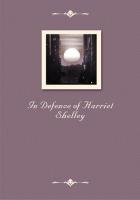Misadventures of Matthieu and his party -- Return to the caches at Salmon River -- Battlebetween
Nez Perces and Black feet -- Heroism of a Nez Perce woman -- Enrolled among thebraves.
ON the 3d of February Matthieu, with the residue of his band, arrived in camp. He had adisastrous
story to relate. After parting with Captain Bonneville in Green River Valley he had proceeded tothe
westward, keeping to the north of the Eutaw Mountains, a spur of the great Rocky chain. Here heexperienced the most rugged travelling for his horses, and soon discovered that there was butlittle
chance of meeting the Shoshonie bands. He now proceeded along Bear River, a stream muchfrequented by trappers, intending to shape his course to Salmon River to rejoin CaptainBonneville.
He was misled, however, either through the ignorance or treachery of an Indian guide, andconducted
into a wild valley where he lay encamped during the autumn and the early part of the winter,nearly
buried in snow and almost starved. Early in the season he detached five men, with nine horses, toproceed to the neighborhood of the Sheep Rock, on Bear River, where game was plenty, andthere
to procure a supply for the camp.
They had not proceeded far on their expedition when their trail was discovered by a party ofnine
or ten Indians, who immediately commenced a lurking pursuit, dogging them secretly for five orsix
days. So long as their encampments were well chosen and a proper watch maintained the warysavages kept aloof; at length, observing that they were badly encamped, in a situation where theymight be approached with secrecy, the enemy crept stealthily along under cover of the river bank,preparing to burst suddenly upon their prey.
They had not advanced within striking distance, however, before they were discovered byone of the
trappers. He immediately but silently gave the alarm to his companions. They all sprang upontheir
horses and prepared to retreat to a safe position. One of the party, however, named Jennings,doubted
the correctness of the alarm, and before he mounted his horse wanted to ascertain the fact. Hiscompanions urged him to mount, but in vain; he was incredulous and obstinate. A volley offirearms
by the savages dispelled his doubts, but so overpowered his nerves that he was unable to get intohis
saddle. His comrades, seeing his peril and confusion, generously leaped from their horses toprotect
him. A shot from a rifle brought him to the earth; in his agony he called upon the others not todesert
him. Two of them, Le Roy and Ross, after fighting desperately, were captured by the savages;the
remaining two vaulted into their saddles and saved themselves by headlong flight, being pursuedfor
nearly thirty miles. They got safe back to Matthieu's camp, where their story inspired such dreadof
lurking Indians that the hunters could not be prevailed upon to undertake another foray in questof
provisions. They remained, therefore, almost starving in their camp; now and then killing an oldor
disabled horse for food, while the elk and the mountain sheep roamed unmolested among thesurrounding mountains.
The disastrous surprisal of this hunting party is cited by Captain Bonneville to show theimportance
of vigilant watching and judicious encampments in the Indian country. Most of this kind ofdisasters
to traders and trappers arise from some careless inattention to the state of their arms andammunition,
the placing of their horses at night, the position of their camping ground, and the posting of theirnight watches. The Indian is a vigilant and crafty foe, by no means given to hair-brained assaults;he seldom attacks when he finds his foe well prepared and on the alert. Caution is at least asefficacious a protection against him as courage.
The Indians who made this attack were at first supposed to be Blackfeet; until CaptainBonneville
found subsequently, in the camp of the Bannecks, a horse, saddle, and bridle, which herecognized
as having belonged to one of the hunters. The Bannecks, however, stoutly denied having takenthese
spoils in fight, and persisted in affirming that the outrage had been perpetrated by a Blackfootband.
Captain Bonneville remained on Snake River nearly three weeks after the arrival of Matthieuand
his party. At length his horses having recovered strength sufficient for a journey, he prepared toreturn to the Nez Perces, or rather to visit his caches on Salmon River; that he might take thencegoods and equipments for the opening season. Accordingly, leaving sixteen men at Snake River,he
set out on the 19th of February with sixteen others on his journey to the caches.
Fording the river, he proceeded to the borders of the deep snow, when he encamped underthe lee
of immense piles of burned rock. On the 21st he was again floundering through the snow, on thegreat Snake River plain, where it lay to the depth of thirty inches. It was sufficiently incrusted tobear
a pedestrian, but the poor horses broke through the crust, and plunged and strained at every step.
So lacerated were they by the ice that it was necessary to change the front every hundred yards,and
put a different one in advance to break the way. The open prairies were swept by a piercing andbiting wind froIn the northwest. At night, they had to task their ingenuity to provide shelter andkeep
from freezing. In the first place, they dug deep holes in the snow, piling it up in ramparts towindward as a protection against the blast. Beneath these they spread buffalo skins, upon whichthey
stretched themselves in full dress, with caps, cloaks, and moccasins, and covered themselveswith
numerous blankets; notwithstanding all which they were often severely pinched with the cold.
On the 28th of February they arrived on the banks of Godin River. This stream emerges fromthe
mountains opposite an eastern branch of the Malade River, running southeast, forms a deep andswift















